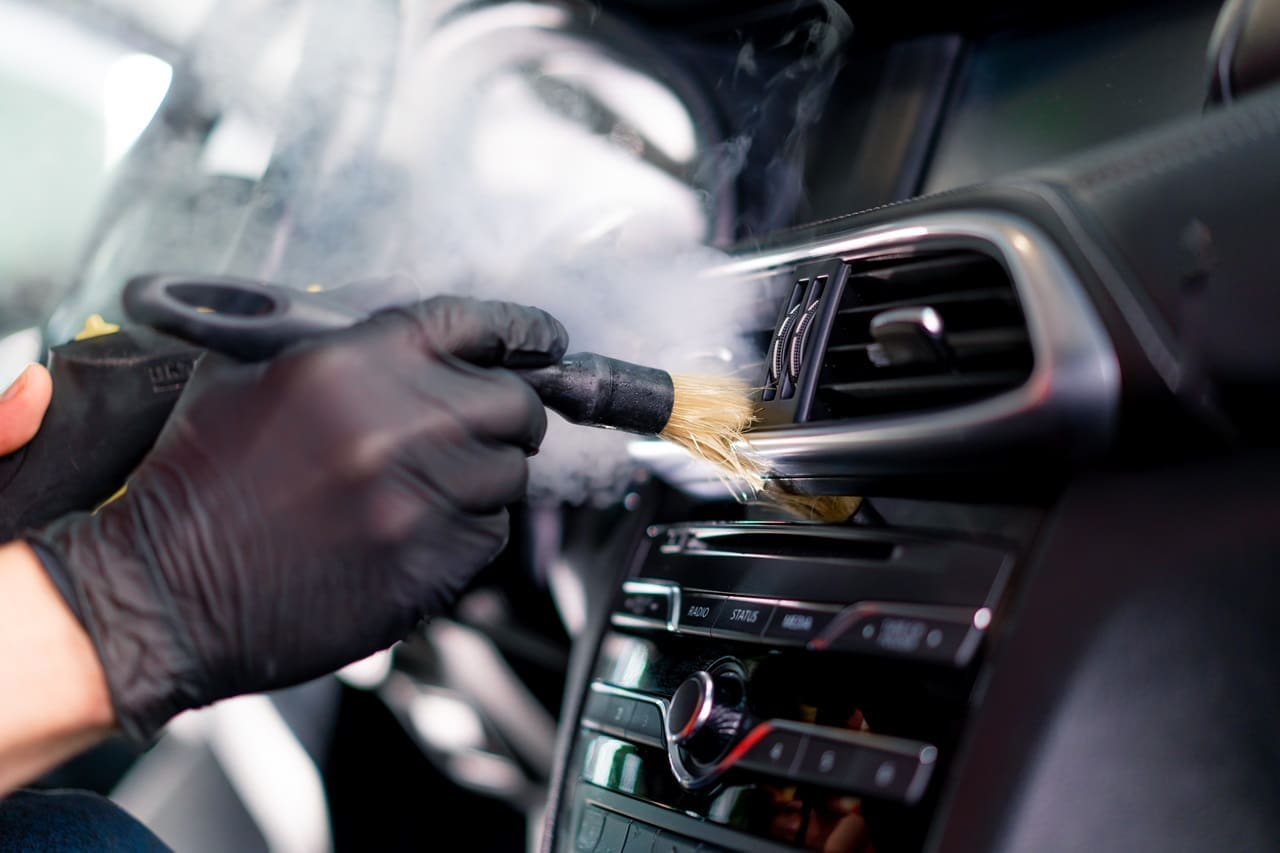When it comes to car cooling, many people think it’s a single system working to regulate the temperature of both the engine and the cabin, but that actually isn’t the case. Your car operates two different cooling systems, one to keep your engine cool and the other to keep you cool. Both the car cooling system and the car air conditioning are crucial to a safe and comfortable drive, especially in Sugar Land in the summertime!
Car Cooling System
Underneath the hood, your engine can produce a lot of heat. Cooling systems help manage these temperatures and prevent your temperature gauge from moving into the dreaded red zone. Cooling systems haven’t changed much from the cars of the 40s and 50s. The basic idea of cooling an engine consists of liquid engine coolant being circulated throughout the engine, then out the radiator to be cooled by the air stream coming through the front grill of the vehicle.
Whether the temperature reaches the triple digits or sinks below zero, your engine must maintain an average temperature. If the engine temperature is too low, fuel economy will suffer and emissions will rise, and if it gets too hot then your engine will lock up and your car will stop.
Car AC System
The AC system is different; this system functions to cool the interior of the car and keep the climate inside at a comfortable temperature for you and your passengers.
Your car’s AC system goes much deeper than the dials and the vents. It can be divided into four different components:
- Compressor – A belt-driven pump fastened to the engine and responsible for compressing and transferring refrigerant gas.
- Condenser – Takes hot compressed gasses from the top of the condenser and then cools them off. As the gas cools, it condenses and exits the bottom of the condenser as a high-pressure liquid.
- Evaporator – Primarily designed to remove heat from inside your vehicle; it can also benefit as a dehumidifier in high humidity climates.
- Pressure Regulating Device – Controls the evaporator temperature by controlling refrigerant pressure.
Keeping These Systems in Check
Now that you know the difference between these two systems, you can take the necessary steps to checking up on them and keeping both of them operational.
If you’re experienced with basic testing and repair of car mechanics, and have the right tools, then you may be interested in doing some of these checks yourself. But if you’re at all unsure, it is always best to have an expert do it for you.
How to Check Your Car’s Cooling System
The National Automotive Radiator Service Association (NARSA) suggests this seven-point system check of the engine cooling system:
- Visually inspect all cooling system components, including belts and hoses.
- Do a radiator cap test to check the system pressure. (Typically, pressure needs to be around 15 PSI, but it depends on the car – check your owner’s manual.) This tests for internal coolant loss.
- Thermostat check for proper opening and closing.
- Pressure test to identify external leaks to the cooling system parts, including the radiator, water pump, engine coolant passages, radiator and heater hoses, and heater core. This is best performed with a cooling system test and/or refill kit.
- Internal leak test to check for combustion gas leakage into the cooling system. A separate tester can be applied to combustion gas leaks through pipe aides and gas lines.
- Engine fan test for proper operation. If the fan is manual, you can perform a visual test to make sure the fan is in good condition and is mounted solidly. If the fan is electric, you’ll need to use a volt meter to determine if the fan is getting the right amount of electricity.
- System power flush and refill, based on your manufacturer’s recommended concentration of coolant.
How to Check Your Car’s AC System
There is no specific timeframe for when you should get your car’s AC checked. Most people wait until the summer, but we recommend doing it before it gets too hot outside. If you feel the temperature is too warm for your liking, then it’s probably a good time to get the AC checked.
- Evacuate refrigerant (Freon) from the system – this is a common culprit of faulty ACs.
- Recharge the system using the appropriate refrigerant to the exact system capacity stated in the manufacturer’s specifications.
- If the Freon change doesn’t do the trick, you’ll need to perform any necessary service on the compressor, evaporator, condenser and electrical controls.
If any of the points above leave you scratching your head, then it’s best to have a certified technician check it out for you. In addition to replacing your Freon levels and making sure all your AC parts are running smoothly, the car AC experts at Colony One Auto Center will also replace the cabin air filter regularly.
The Car AC and Cooling Experts in Sugar Land, Texas
We service both these systems for cars and trucks in the Sugar Land and surrounding areas. We will make sure you and your car stay cool this summer. Contact us today to learn more about these and other services we offer at Colony One Auto Center.

